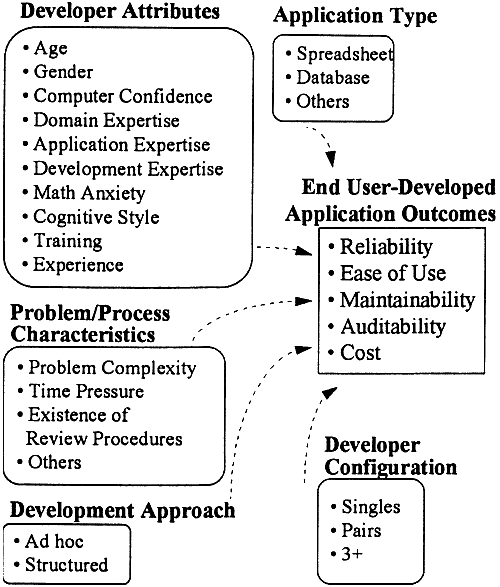Authors
Diane Janvrin & Joline Morrison
Abstract
Computations performed using end-user developed spreadsheets have resulted in serious errors and represent a major control risk to organizations. Literature suggests that factors contributing to spreadsheet errors include developer inexperience, poor design approaches, application types, problem complexity, time pressure, and presence or absence of review procedures.
We explore the impact of using a structured design approach for spreadsheet development. We used two field experiments and found that subjects using the design approach showed a significant reduction in the number of 'linking errors' i.e., mistakes in creating links between values that must connect one area of the spreadsheet to another or from one worksheet to another in a common workbook.
Our results provide evidence that design approaches that explicitly identify potential error factors may improve end-user application reliability. We also observed that factors such as gender, application expertise, and workgroup configuration also influenced spreadsheet error rates.
Sample

Our initial research framework summarizes risk factors and their relationships to potential outcomes.
Our focus is to determine the impacts of development approach on spreadsheet reliability and cost.
Publication
2000, Information & Management, Volume 37, Number 1, pages 1-12
Full article
Using a structured design approach to reduce risks in end user spreadsheet development
